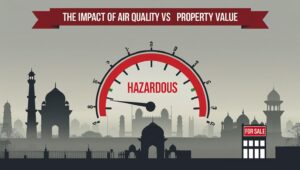If you’re thinking about greener, cheaper and more comfortable homes, stabilized mud blocks India are worth a serious look. These blocks — often called Compressed Stabilized Earth Blocks (CSEB) or ISSB — use local soil mixed with a small amount of stabilizer (cement or lime), compressed into uniform bricks. They cut carbon, lower cooling costs, and can be cheaper than conventional bricks or AAC blocks while giving a warm, breathable indoor feel.
In this post I’ll explain practical benefits, real-life examples from India, how they’re made, costs, builders and suppliers to try, and when not to use them. This is written in plain language so you can act on it right away.
What are stabilized mud blocks?
A stabilized mud block is made by mixing soil with a small percentage of a stabilizer — commonly Portland cement or lime — then compressing the mix under high pressure in a machine or press. The compression and stabilizer give the block strength and durability without firing in a kiln.
Because they use raw earth (often from the site) and require much less energy to make, they’re grouped under sustainable building materials. Makers call them CSEB, stabilized earth blocks, ISSB (interlocking) or simply stabilized mud blocks. The Auroville Earth Institute has long recommended CSEB as a low-energy masonry material and explains how cement or lime stabilisers change performance.
Top benefits of stabilized mud blocks India
1) Lower embodied carbon and energy use
Making traditional clay bricks or AAC blocks requires firing or high-temperature processing, which emits a lot of CO₂. Stabilized mud blocks are compressed and cured, using only a small cement or lime fraction — so their embodied carbon is much lower.
2) Strong thermal comfort (cooler in summer, warmer in winter)
Earth has natural thermal mass. Walls built from stabilized mud blocks slow heat transfer, which keeps interiors cooler in hot weather and more stable in colder nights. In real terms, many homeowners report lower daytime temperatures and reduced reliance on fans/AC.
3) Lower material cost (when soil is local)
Because the main ingredient is local soil, material cost can drop significantly — especially if you avoid long transport. Many Indian builders who switch to on-site or nearby CSEB production report savings, particularly for low- to mid-rise housing and farmhouses.
4) Healthier indoor air (breathability)
Earthen walls can moderate humidity and don’t trap harmful volatile compounds the way some synthetics do. Houses built with stabilized mud blocks often feel “comfortable” and dry without a sealed, synthetic smell.
5) Local employment and circularity
Using local soil and simple machinery creates jobs in the community — from block-making to masonry and landscaping.
6) Faster, quality-controlled masonry
Compressed blocks are uniform in size and strength when made correctly, which speeds building and reduces mortar use. Interlocking versions (ISSB) further speed up construction and reduce mortar lines.
Real-life examples in India
- Earth Blocks India — one of the noted companies making factory-produced CSEB and promoting their use in Indian projects since the mid-2010s. They publish product details and case images of homes built using factory CSEB.
- Auroville Earth Institute — pioneers in earthen construction, training masons and architects on CSEB. Their methods and manuals are widely used by NGOs and sustainable architects across India.
- Local manufacturers and dealers — many are listed on business directories in Chennai, Delhi and other metros. Searching for “Stabilized Compressed Earth Blocks” plus your city is the best way to locate nearby vendors.
How stabilized mud blocks are made
- Soil testing — a simple particle-size and plasticity test determines suitability. Some clays need adjustment (sand added) or different stabilizer %.
- Mixing — soil + stabilizer (5–10% cement or lime) + water mixed to a consistent paste.
- Compression — mix is fed into a hydraulic or mechanical press; blocks are compressed under high pressure.
- Curing — blocks are kept moist and shaded for 7–28 days depending on stabilizer and climate.
- Quality checks — compressive strength, water absorption and dimensional checks.
If a vendor can’t show test results, it’s better to avoid them.
Typical specs & quality markers
- Compressive strength: usually 3–7 MPa depending on stabilizer % and compaction.
- Water absorption: should be controlled; too much means risk in heavy rains.
- Dimensional uniformity: ±2 mm tolerance ensures faster masonry and less mortar.
- Stabilizer percentage: know whether cement, lime or other stabilizers are used.
Cost comparison (indicative)
- Fired clay brick wall: baseline cost.
- AAC blocks: higher material cost, good insulation but higher embodied energy.
- Stabilized mud blocks: cost-effective if soil is on-site; setup costs amortised across a project.
For a small single house, machine setup may feel expensive, but for multiple houses or compounds, CSEB often ends up cheaper than AAC or clay bricks.
Construction tips for builders/homeowners
- Protect the plinth with a proper damp-proof course (DPC).
- Use good plaster — cement-lime or lime-based plasters are common.
- Keep roof overhangs wide to reduce wall wetting.
- Train masons in CSEB laying.
Limitations — when not to use CSEB
- Very high rain or flood zones unless heavily protected.
- Very high structural load requirements without proper engineering.
- Sites where local soil is unsuitable or not available.
Who to contact in India
- Earth Blocks India — ready-made CSEB supplier.
- CSEB/ISSB machine makers — such as Possible Machineries and other local equipment suppliers.
- Local vendors — many listed on trade platforms.
- Training & design support — Auroville Earth Institute.
Small case study
Project: 2-bed single-storey house near Chennai.
Approach: On-site soil tested, 7% cement stabilizer used, blocks pressed on rented CSEB machine, cured for 14 days.
Outcome: About 10–20% cost savings compared to clay bricks, cooler interiors, and faster build time. No damp issues after two years due to proper foundation and plastering.
Frequently asked questions
Q: Are stabilized mud blocks strong enough for a house?
Yes — when properly mixed, compressed and cured they reach suitable compressive strength for load-bearing walls in single- and low-rise homes.
Q: Will they erode in rain?
Not if properly stabilized and protected with DPC, plaster and wide eaves.
Q: How much cement is used?
Typically 5–10% by weight, depending on soil.
Quick decision checklist
- Has soil been tested?
- Can walls be protected with DPC and wide eaves?
- Do you have access to a supplier or press nearby?
- Can masons be trained or hired with experience?
- Did supplier show test reports?
If yes to most, it’s worth building a pilot wall or structure.
Final thoughts
Stabilized mud blocks India are a strong option when you want a low-carbon, comfortable and often cost-competitive building material. They’re ideal for rural and peri-urban houses, eco-resorts, farmhouses and low-rise housing where local materials and climate-friendly design come together. The key is soil testing, reliable suppliers, correct damp-proofing and plaster, plus trained masons. If you’re planning a project, ask local suppliers for sample blocks and lab tests first — then start small before scaling up.


